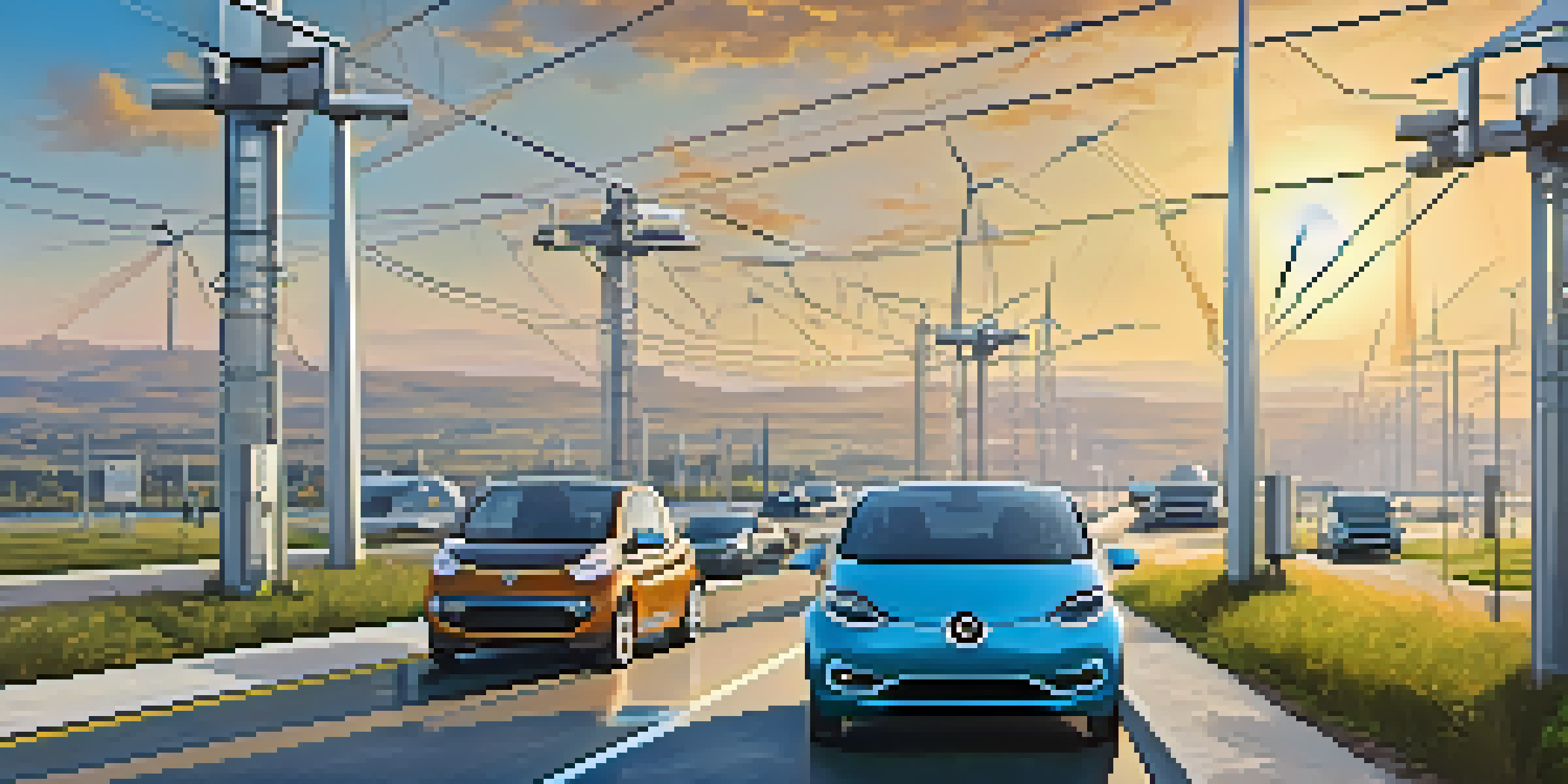Smart Grids: The Integration of CPS in Energy Distribution

Understanding Smart Grids: The Basics Explained
Smart grids represent the evolution of traditional energy grids, integrating digital technology to improve efficiency and reliability. Unlike conventional grids, they allow for two-way communication between utilities and consumers. This shift not only enhances energy distribution but also enables real-time monitoring of energy usage, leading to smarter consumption.
The future is not something we enter. The future is something we create.
Imagine a highway where both cars and traffic lights can communicate, adjusting speed and flow to prevent jams. That’s akin to how smart grids operate, optimizing energy distribution based on demand and supply. This communication is essential for managing resources effectively, particularly as renewable energy sources become more prevalent.
By utilizing smart technologies, energy providers can respond to outages faster, manage peak loads, and reduce operational costs. The result is a system that is not only smarter but also more resilient, paving the way for a sustainable energy future.
The Role of Cyber-Physical Systems (CPS) in Smart Grids
Cyber-Physical Systems (CPS) bridge the gap between the physical and digital worlds, enabling the smart grid to function effectively. These systems integrate computational algorithms with physical processes, allowing for real-time data collection and analysis. This means that energy providers can monitor systems closely and make informed decisions promptly.

Think of CPS as the nervous system of a smart grid, where sensors and smart meters act as the sensory organs. They collect vital information about energy production and consumption, which is then processed to manage the grid efficiently. This interconnectedness is crucial for optimizing energy flow and preventing disruptions.
Smart Grids Enhance Energy Efficiency
Smart grids utilize digital technology for two-way communication, allowing real-time monitoring and smarter energy consumption.
Moreover, CPS enhances the grid's ability to incorporate renewable energy sources like solar and wind. By continuously analyzing data, CPS can adjust how energy is sourced and distributed, ensuring a stable supply even when conditions fluctuate.
Benefits of Integrating CPS into Energy Distribution
Integrating CPS into energy distribution brings numerous benefits, including increased efficiency and reliability. With real-time data, utilities can predict energy demand patterns and adjust supply accordingly. This proactive approach reduces energy waste and lowers costs for both providers and consumers.
We need to think about the future and how we can leverage technology to create a more sustainable world.
Consider a scenario where a neighborhood experiences a sudden surge in energy demand due to a local event. A smart grid with CPS can detect this spike and reroute energy from less-demanding areas to meet the need, ensuring that power remains consistent. This responsiveness is a game-changer in energy management.
Additionally, the integration of CPS enhances grid security. By constantly monitoring the system, any threats or anomalies can be identified and mitigated quickly, protecting against cyber threats that could disrupt service.
Challenges in Implementing Smart Grids with CPS
While the benefits of smart grids and CPS are significant, there are challenges to overcome in their implementation. One major hurdle is the high initial cost of upgrading existing infrastructure. Utilities may struggle to secure funding for the necessary technology and installations, which can slow down progress.
Another challenge is data privacy and security. With the increased connectivity of smart grids, sensitive consumer data is at risk of exposure. Ensuring robust cybersecurity measures are in place is paramount to protect both the grid and consumer information.
CPS Boosts Grid Reliability and Security
Cyber-Physical Systems integrate data collection and analysis, enhancing the grid's responsiveness to demand and improving security against threats.
Lastly, there is a need for regulatory frameworks that support the integration of smart grids and CPS. Policymakers must establish guidelines that promote innovation while safeguarding public interests, creating a balanced approach to energy distribution.
Future Trends in Smart Grids and CPS Integration
As technology continues to evolve, the future of smart grids and CPS integration looks promising. One emerging trend is the rise of artificial intelligence (AI) in energy management. AI can analyze vast amounts of data quickly, enabling smarter decision-making processes that enhance grid efficiency.
Moreover, the adoption of electric vehicles (EVs) is expected to influence smart grid development. With more EVs on the road, grids will need to adapt to manage the increased demand for charging stations. Integrating CPS can help balance this load and ensure a seamless energy supply.
Additionally, community-driven energy solutions are gaining traction. Neighborhoods may start forming local energy grids, utilizing CPS to manage their own energy resources effectively. This shift could empower consumers and promote sustainability at the grassroots level.
The Importance of Consumer Engagement in Smart Grids
Consumer engagement plays a crucial role in the success of smart grids and CPS. When consumers are informed and involved in their energy consumption, they are more likely to adopt energy-saving practices. Smart meters provide real-time feedback, helping households understand their energy usage and make informed decisions.
Imagine receiving a notification on your phone when energy prices drop, allowing you to run your dishwasher or charge your EV at a lower cost. This kind of engagement not only saves money but also encourages a shift towards more sustainable energy practices.
Consumer Engagement Drives Sustainability
Active consumer participation in energy management fosters energy-saving practices and supports the transition to renewable energy sources.
Furthermore, fostering a culture of energy awareness can lead to community initiatives that promote renewable energy sources. When consumers unite around sustainability, they can advocate for policies and programs that support the transition to smarter energy systems.
Conclusion: Embracing the Future of Energy Distribution
In conclusion, the integration of Cyber-Physical Systems into smart grids marks a significant advancement in energy distribution. By leveraging technology, we can create a more efficient, reliable, and sustainable energy ecosystem. The benefits are clear: reduced costs, enhanced security, and improved consumer engagement.
However, it is essential to navigate the challenges carefully, ensuring that implementation is both effective and secure. As we look to the future, embracing innovations like AI and community-driven solutions will be key to realizing the full potential of smart grids.

Ultimately, the collaboration between technology, utilities, and consumers will shape the energy landscape. By working together, we can build a smarter, greener future for generations to come.